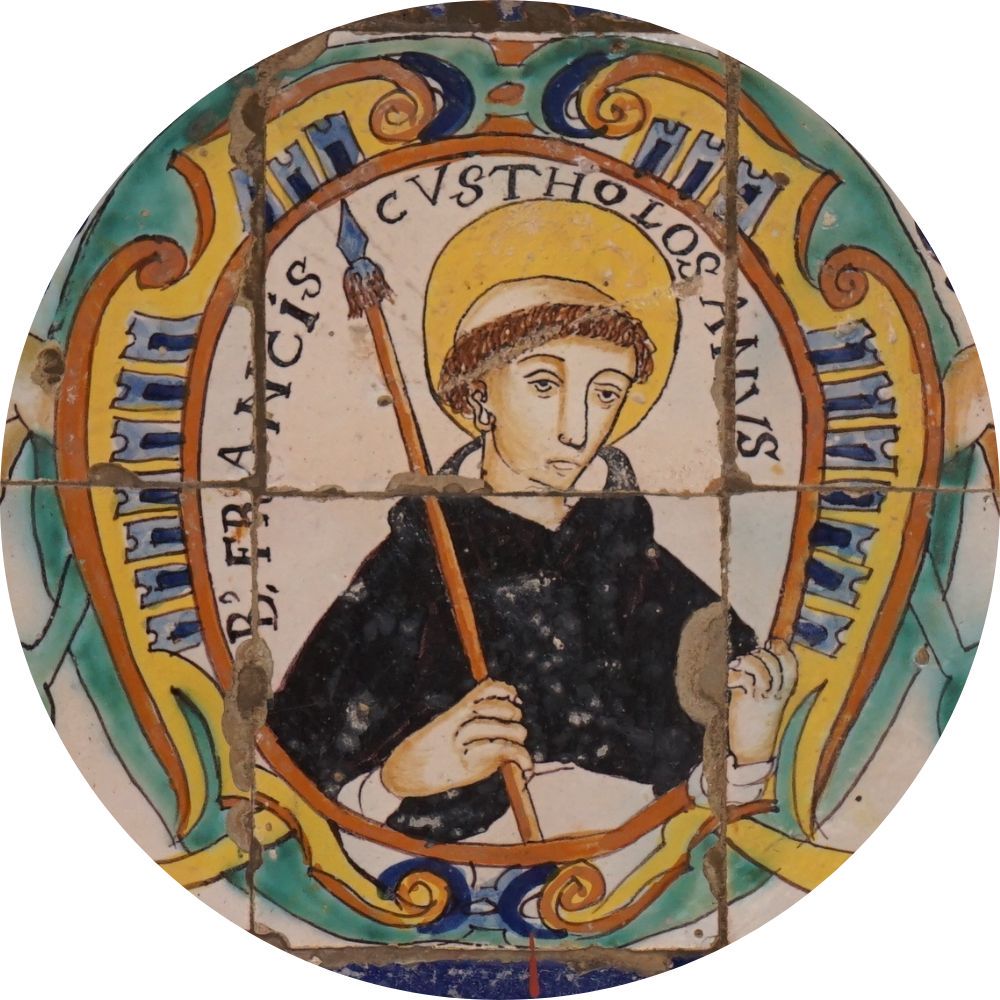Francis of Toulouse
Francis of Toulouse
(died in 1260)
There is plenty of doubts when it comes to this Dominican. We cannot be sure where he came from or whether he lived at all. This is because we do not have any sources from his time that confirm his existence. Nor do we have any data on his life other than the account of his martyrdom at the hands of the Cathars in 1260. All known accounts date back to the 17th century.
According to some narratives, Francis is said to have come from Toulouse, where he witnessed the nascent Albigensian heresy. St. Domini, the founder of the Order of Preachers., fought against it. Animated by the same zeal, Francis decided to join the ranks of the brother preachers so that he too would fight for the truth. He became a well-known and experienced preacher, and his piety was expressed by the severe mortifications he undertook for the conversion of heretics; moreover, he prayed day and night for the eradication of heresy. His preaching work, in which he often combated Catharism, led to his appointment as inquisitor of Toulouse and the entire province.
He preached constantly, going from country to country to search for heretics. When he found them, he would judge them according to the church law of the time, and when they continued in error and were unrepentant, he would hand them over to the secular authorities, who would mete out punishment. Eventually, the Cathars decided to kill him and looked for a suitable opportunity to do so. Francis was aware of this, especially since he had been warned against it more than once. However, he continued to tour the area and fight heresy. One day he was ambushed by the Cathars. They led him, as a villain, to their fortress. There they put a crown of thorns on him, which they drove into his head with large sticks. Afterwards, a hail of arrows shot toward him, wounding his body fatally.
Generally, the date of his martyrdom is considered to be March 14, 1260, since it is under this date that he can be found in the Dominican martyrologies. However, we can also find some catalogs of Dominican saints in which he appears under the year 1270, and some also give a different date - February 19. It seems that we cannot be sure as to either the day or year of his death.
In a manuscript preserved in the General Archives of the Order of Preachers in Rome, under reference XIV.53, there is a medieval catalog of martyrs in which Francis of Toulouse is listed as "sagatis transfixus et spinis coronartus martir" (martyr pierced by arrows and crowned with thorns). Elsewhere in this manuscript, we read a bit more about his martyrdom: "Frater Franciscus Tholosanus fidem Christi predicando et detendendo ab hereticis captus ab eisdem spinis coronatuis ad instar Salvatoris et sagittis ac telis transverberatus cum palma martyrii ad celestia regna feliciter evolavit pro terrenis celstia pro perituis eterna commutans" (Brother Francis of Toulouse, preaching and defending the faith of Christ, caught by heretics, was crowned with thorns like the Savior and pierced by arrows with the palm of martyrdom flew happily to the heavenly kingdom, exchanging earthly goods for heavenly ones). In 1637, André du Saussay (1589-1675), later Bishop of Toulouse, wrote similarly about him in his Martyrologium Gallicanum: „Frater Franciscus Tolosanus Ordinis FF. Praedicatorum, dum fidem catholicam factis astruit, et verbis propu gnat, ob zelum veritatis et conversionis errantium assiduum studium , ab hæreticis spinis coronatus, et telis confessus, martyrium complevit" [Brother Francis Toulouse of the Order of Friars Preachers, affirming the faith by deeds and proclaiming it by words, driven by zeal for the truth and the constant teaching of the erring, crowned by heretics with thorns and arrows, completed his martyrdom].
Interestingly, the well-known chronicler of the Dominican order and inquisitor, Bernard Gui mentions him in his chronicle in the chapter describing the brothers who suffered for the faith. This may indicate that the figure is not confirmed in 13th century sources and is rather legendary. But as is evident he was present in the later consciousness of both the Catholic Church in France and the Order of St. Dominic. He was never officially elevated to the altars, although many 16th-, 17th- and 18th-century sources mention him as blessed. In his Dni Roczne, Polish Dominican - Michal Siejkowski - writes that he is saintly, and the commemoration of his martyrdom falls on March 14.
As we can see, it was the arrow that became the attribute of this Dominican inquisitor and martyr in the cloisters of the Santo Domingo Monastery in Lima.
Bibliography:
- Fontana V.M., Monumenta Dominica breviter in synopsim collecta, de fides obsequiis ab Ordine Praedicatorum Sanctae Dei Ecclesiae usquemodo praestiis, Romae 1675, p. 78.
- Fotana V.M., Sacrum theatrum dominicanum, Romae 1666, pp. 506, 613.
- Année Dominicaine, ou vie des saints, des bienheureux, des martyrs et des autres personnes illustres et recommandables par leur piété, de l’un et l’autre sexe, de l’Ordre des Frères Prêcheurs, distribuée suivant les jours de l’année, nouvelle édition revue et annotée par des Religieux du même Ordre, [vol. 3]: Mars, Lyon 1886, pp. 371-373.
- Loenertz R., Un catalogue d’écrivains et deux catalogues de martyrs dominicains, „Archiwum Fratrum Praedicatorum”, 12 (1942), p. 279-303.

